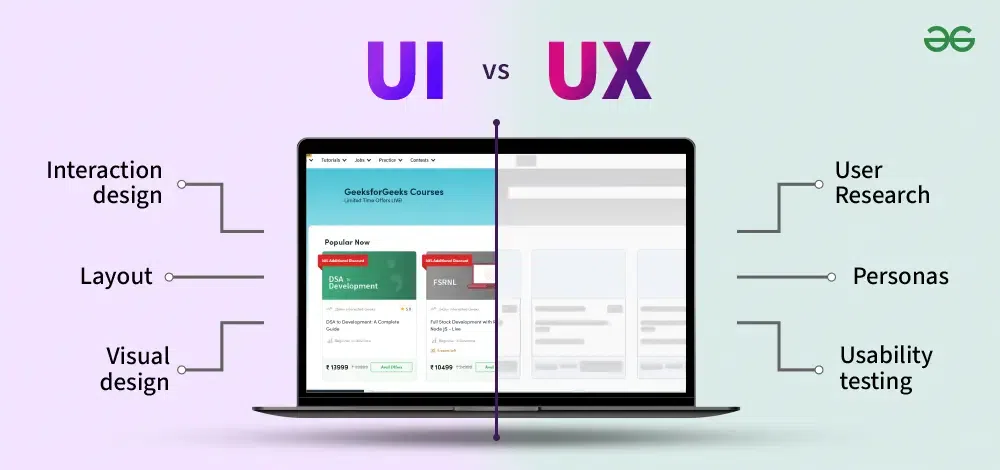Why UX/UI Design Is No Longer Optional for Competitive Apps

In today’s digital landscape, simply building a functional app isn’t enough. The competition is fierce, user expectations are high, and attention spans are short. What separates a forgettable app from one that users return to again and again often comes down to one crucial element: design. More specifically, UX UI design services are now a non-negotiable part of app development for businesses aiming to stay relevant and competitive.
From the first interaction to long-term usage, a well-designed user experience (UX) and user interface (UI) have the power to make or break an app. While functionality ensures that the app works, design ensures that users enjoy using it. Without good UX/UI design, even the most innovative features can go unnoticed or, worse, become frustrating to use.
The Shift from Utility to Experience
There was a time when apps were primarily judged by what they could do. Today, they are equally judged by how they do it. In other words, the experience matters just as much as the features. Users don’t just want tools; they want tools that are intuitive, visually pleasing, and enjoyable.
This shift means that UX/UI design is no longer a secondary concern or an afterthought. It’s at the core of product strategy. Developers and business owners can no longer afford to bolt on design at the end of a project. Instead, design thinking needs to be embedded into every phase of app development.
First Impressions Happen Fast
Users make snap judgments. Within seconds of opening an app, they decide whether to stay or leave. This critical window is where UI design plays its most visible role. A clean layout, easy navigation, and consistent visual elements help users feel comfortable and confident. If an app feels clunky or confusing, chances are it won’t get a second chance.
UX design, on the other hand, ensures that once users are in the app, they can complete their goals smoothly. This includes everything from onboarding to task completion to feedback. Without thoughtful UX design, users are left guessing, which leads to frustration and drop-offs.
User-Centered Design = Loyal Users
When users feel that an app “gets” them, they stick around. This is the result of user-centered design, a fundamental principle of good UX/UI work. By focusing on real user needs, behaviors, and pain points, designers create experiences that feel natural and relevant.
This approach goes beyond aesthetics. It’s about understanding the journey users take and smoothing out every step. Do buttons appear where they’re expected? Is it clear what to do next? Are users guided when they need help, and left alone when they don’t? These are all questions that UX/UI designers address.
When apps get this right, they create a kind of invisible support that users appreciate but may never consciously notice. And that’s often the best kind of design.
Standing Out in a Crowded Market
App stores are overflowing. For every type of app imaginable, there are dozens—if not hundreds—of options available. In such a crowded space, UX/UI design is one of the most effective ways to differentiate.
Even if two apps offer the same features, the one with the better user experience is more likely to succeed. It’s not about being the only app that does something; it’s about being the easiest and most pleasant to use. Good design builds trust, communicates professionalism, and signals that the creators care about their users.
UX/UI Design and Business Goals Go Hand-in-Hand
Great design isn’t just about making users happy. It also directly supports business goals. Whether the goal is to increase signups, boost retention, drive in-app purchases, or improve user satisfaction, UX/UI design plays a central role.
For example, a streamlined signup flow can reduce drop-offs. A smart layout can highlight key features and encourage exploration. Micro-interactions can create delight, while clear calls to action can guide behavior. Each of these design elements contributes to measurable outcomes.
This is why UX/UI design services are not just an investment in aesthetics—they are an investment in performance.
The Cost of Bad Design
If good design helps apps thrive, poor design can do the opposite. Confusing navigation, inconsistent visuals, and unclear instructions all create friction. Users abandon apps that make them think too hard or feel frustrated.
Worse still, bad design damages credibility. Users may assume that if the interface is clunky, the app itself is unreliable. This perception can lead to negative reviews, low ratings, and high uninstall rates. And once a user is lost, getting them back is significantly harder.
In fact, according to Forrester, every dollar invested in UX brings a return of up to $100. Poor design not only frustrates users—it directly impacts revenue and retention.
Avoiding these pitfalls is one of the key reasons why involving professional UX/UI designers early in the development process is so critical.
Design as a Continuous Process
One common misconception is that design is a one-time task. In reality, UX/UI design is ongoing. As user behaviors evolve, technology advances, and business goals shift, design needs to adapt.
Top-performing apps regularly revisit their design to improve usability, incorporate feedback, and stay ahead of trends. This continuous improvement cycle is only possible with a strong design foundation in place.
UX/UI design services often include ongoing support for testing, iteration, and refinement. This ensures that the app remains competitive not just at launch, but over time.
Collaboration Is Key
UX/UI design does not exist in a vacuum. It intersects with development, marketing, customer support, and more. Collaborative teams that bring design into the conversation early and often are more likely to build apps that succeed.
When designers and developers work side-by-side, technical constraints are considered from the start. When marketing teams are involved, the messaging and visual language align. When customer feedback is looped in, the design reflects real-world use.
This collaborative approach ensures that design serves both users and the business as a whole.
Final Thoughts: Design Is the New Standard
The days when UX/UI design was considered optional are over. In a world where users have more choices than ever, experience is everything. Functional apps are expected; delightful, intuitive, and beautifully designed apps are the ones that win.
For businesses looking to launch or improve an app, ignoring design is no longer an option. Engaging with skilled UX/UI design services from the outset is one of the smartest decisions a product team can make. It’s not just about looking good—it’s about working well, converting users, and building lasting relationships.
According to a Forrester study, a well-designed user interface could raise a website’s conversion rate by up to 200%, while better UX design could yield conversion rates up to 400%. In today’s crowded market, great design is no longer optional—it’s a competitive advantage.
In the end, design isn’t a luxury. It’s a necessity. And it just might be the difference between an app that’s opened once and deleted, and one that becomes an essential part of users’ lives.

Source: Why UX/UI Design Is No Longer Optional for Competitive Apps

